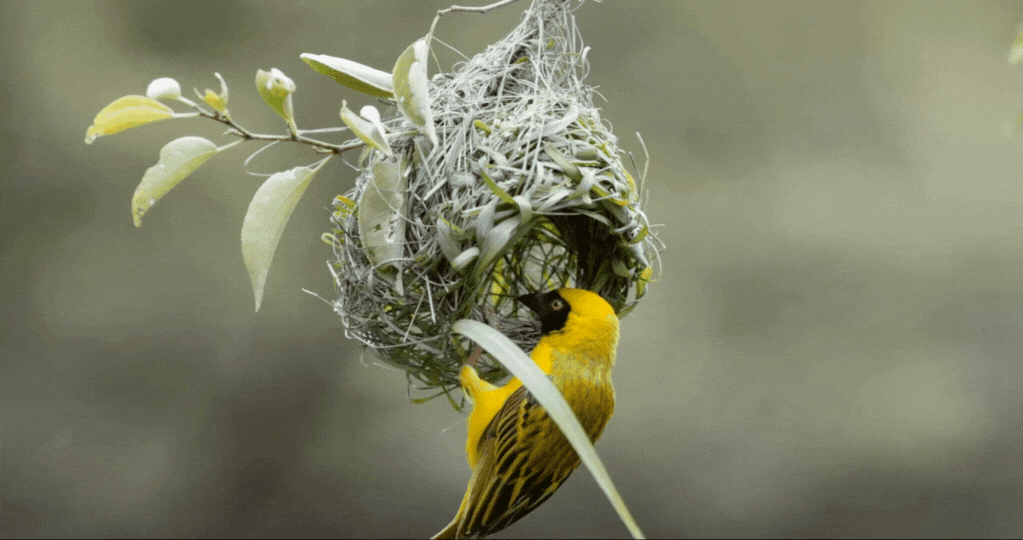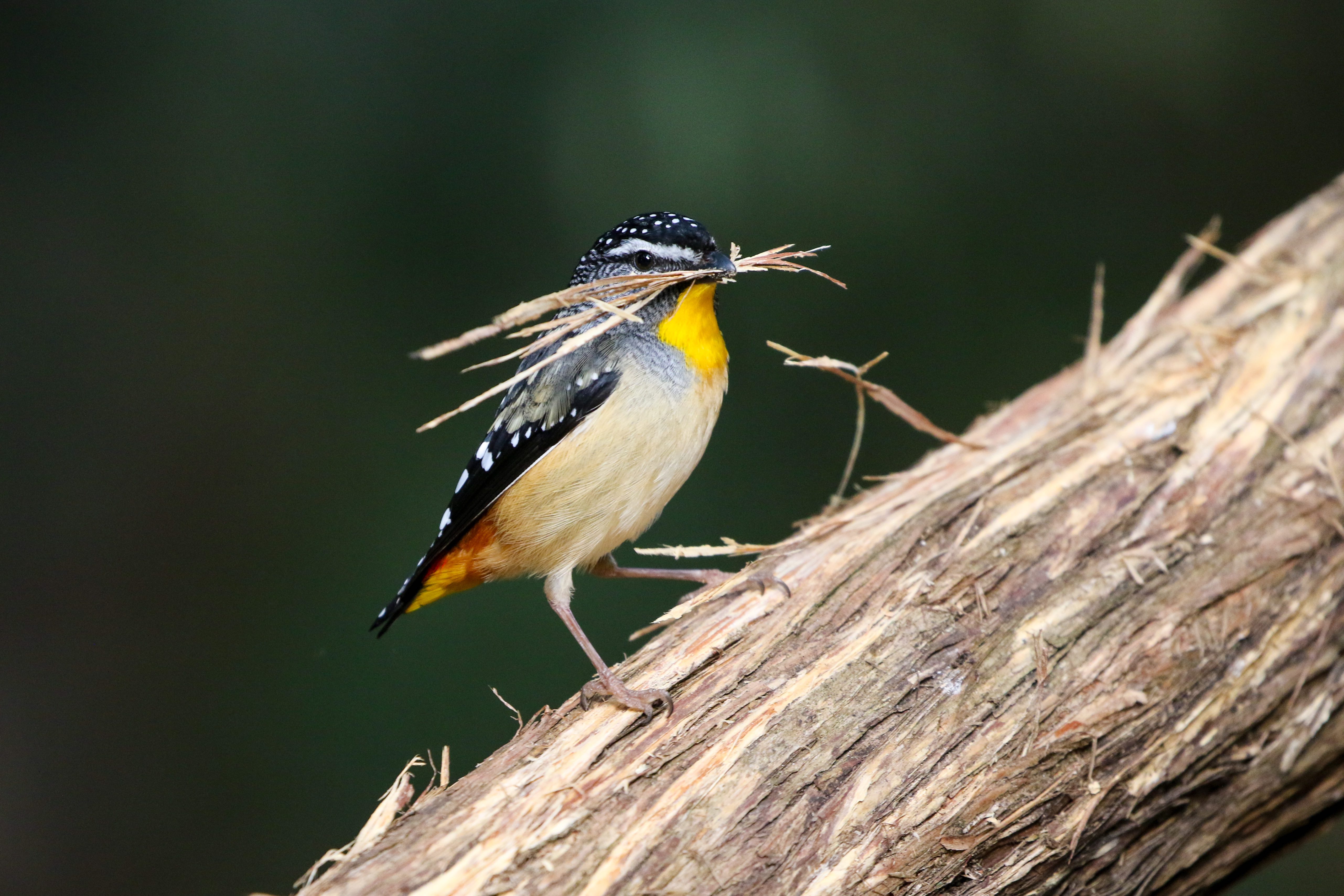
Sciences & Technology
The invisible colours protecting birds from overheating

Whether it’s a dome, cup or pendant, new research shows bird nest designs match specific climatic conditions, giving hope that some can adjust nesting behaviours for changing weather conditions
Published 20 June 2024
Every spring, one of the most incredible feats of animal behaviour takes place right before our eyes.
A tiny animal – with a very tiny brain – goes busily back and forth, carrying branches, feathers, grass and sometimes fur with a very specific plan in mind – a design for a nest.
Birds' nests can come in all shapes and sizes – from the traditional cup nests to those that hang like pendulums from the branches of trees.
Building a nest can take hours, days, sometimes even weeks. But each design has been refined over millions of years of evolution and is specific to each species.
Nests are the key to the survival of birds, quite literally holding the future of their populations within them.
But how did nest designs become so very different?
And will they change as the planet does?
Our research has been looking into these questions using over 700 museum specimens.
The answers will help us understand how future climatic challenges might affect species’ designs and how bird nests, and their occupants, will cope in a changing world.
When we think of nests, the first image that usually comes to mind is a cup, a simple structure that works like a vessel to hold eggs and chicks. But with a plethora of designs in the bird world, this vessel can take many shapes.
Some species build enclosed nests, domed structures with a side entrance and a roof.
These nests are rarer than open cups but many perching birds build them, including Australian species like lyrebirds, thornbills, gerygones and fairy-wrens. Building a roof may be a tool to help protect young from higher levels of solar radiation.
1 / 4
Researchers are only just starting to understand the reasons behind the great variation in nest designs. There are broad architectural differences but, as with human houses, there is also variation in many other features.
Some nests have incredibly thick walls, while others you can see right through. Some nests are pendant shaped and elongated, while other nests are wide and flat.
Our team, along with others across the world, are studying why species build nests the specific ways they do, and how we ended up with such a huge variety of nest designs.
To do this, we looked to museums as an incredible, but often overlooked resource, that not only contain collections of animal specimens, but what they build.
Museums across the world, including Australia, have large collections of preserved nests, with some collected centuries ago. In cases where species have disappeared, all we have left are the structures they built.

Sciences & Technology
The invisible colours protecting birds from overheating
By taking detailed measurements across collections in the United Kingdom and Germany, we characterised the type of nest built by different species.
For one study, we explored more than 700 nests from 55 perching bird species, and another paper looked at 49 species of tanagers – perching birds from Central and Southern America.
We connected nest diameter, wall thickness, cup depth and opening size with climatic information from the locations where the nests were found.
This allowed us to draw interesting links between certain climatic conditions and specific nest features.
For example, we found that nests constructed in locations with high levels of rain had thinner walls, while nests with thicker walls tended to be from drier environments.
1 / 4
Our findings supported at broad scale what had been reported in a few species – that thinner walls in wet environments would allow nests to dry much faster, so puddles don’t form inside.
Thicker walls on the other hand, might be able to capture and hold humidity better in dry environments, which is especially important to help eggs hatch.
Wind also seems to be an important force driving the evolution of certain nest features, specifically in open-cup nests. Here, we found nests had deeper cups if they were built in environments with higher wind speeds.
This makes sense, because if nests don’t have a roof, then strong winds can dislodge eggs and nestlings.
The higher walls in these nests would also protect eggs from cooling down too quickly – eggs need consistently high temperatures of around 37 °C to develop.

Sciences & Technology
Willie wagtails: The werewolves of the bird world
Other studies have also shown that the size of the nest and the amount of lining material also varies depending on the local temperature, with colder conditions favouring nests with more lining that may help keep their contents warm.
Our results support the idea that the link between environment and nest design is more refined than we previously suspected, and that the structures we see now are made for the local conditions where the birds are breeding.
The insights from our study come from very closely related species of birds called tanagers, which suggests that these design alterations could have evolved relatively recently or could even be the product of experience and learning.
Our research shows that closely related species can have a large range of variations in their nests, but we also wanted to know what happens within species and populations.
Do all individual birds from the same species use the exact same recipe for construction?
Looking at museum specimens, we found the individuals of some species build very uniform nests; for example, the width of the cup or height of the dome varies by less than two per cent.
But there are some species that show extreme variation in the shape of nests they build, with some building both open-cup and enclosed domed nests within the same species.
Because similar levels of variation were found in closely related species, this nest building flexibility may be genetically determined, which could mean some groups of species may respond more effectively to global climate change.
It’s interesting to note that flexibility in food foraging behaviour did not appear to correlate with flexibility in nest construction.
Our study was a proof-of-concept that we could find this kind of information from museum nest collections, but we need more research to understand why some species are much more flexible in their designs.

Sciences & Technology
New dimensions in colour
Nest builders are deeply connected to their environment and their constructions tend to match their local climatic conditions.
We found this was the case across millions of years of evolution, but the obvious question is, what happens if we suddenly change the environments where birds are building their nests?
What happens if the temperatures where they breed become much warmer? And if the materials they build their nests with are not available anymore?
While we don’t yet have these answers and more research is needed, it’s clear that these environmental changes could have dramatic consequences for bird populations.
For example, recent research has already told us that temperatures inside nests are rising and this is leading to a decline in some bird populations.
There is almost no information about if and how quickly birds can adjust their designs. Nor about how effective those changes would be in protecting their offspring.

Our work suggests that not all birds will be able to adjust their designs within the tight time frames that might protect them from a warming climate, so some species might have to respond in ways that don’t involve architectural solutions, like shifting their ranges or breeding at a different time.
Other species might be able to adjust specific design features to decrease temperatures inside their nests or use different types of materials that can offer better insulation.
Next spring, spare some time to appreciate the wonder of nest building if you are lucky enough to see it happening.
The designs that have evolved over millions of years may not stay the same, needing adjustments to cope with the challenges imposed by humanity.